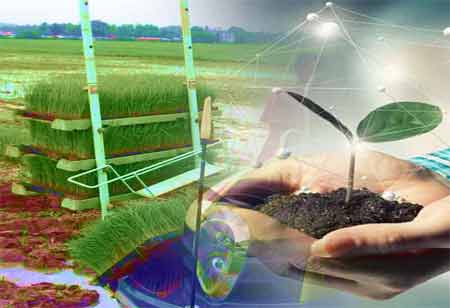Thank you for Subscribing to Agri Business Review Weekly Brief
Characteristics Of Hydroponics
Hydroponics, a cropping technique allied to sustainability.

By
Agri Business Review | Monday, October 17, 2022
Stay ahead of the industry with exclusive feature stories on the top companies, expert insights and the latest news delivered straight to your inbox. Subscribe today.
Hydroponic crops save water, land, and resources and are essential to sustainable agriculture.
FREMONT, CA: Hydroponics, a cropping technique allied to sustainability. Hydroponic crops are a practice that does away with soil and, in its place, utilizes a solution of water embellished with nutrients, among other replacements. Using few resources is a more sustainable option than traditional agriculture.
Hydroponic crops save water, land, and resources and are essential to sustainable agriculture.
Environmental conservation is one of society's great challenges, and some current forms of agriculture pose a threat. The United Nations Food & Agriculture Organisation (FAO) provides it, along with other sectors, as one of the most general anthropogenic causes of soil pollution.
Deforestation, caused mostly by soil conservation for agricultural use, and the greenhouse effect emissions generated by the farms themselves convey the sustainability of the present model into question. Still, there are alternatives such as hydroponics, a more sustainable form of cultivation used in urban environments to be closer to consumers.
WHAT IS HYDROPONICS
Hydroponics is a cropping system that makes plants grow in a nutrient-rich water solution; in short, it does not use soil. Moreover, the water used can be recovered and recycled, and the nutrients can be obtained from various sources, comprising fish excrement (a technique known as aquaponics).
HYDROPONICS AND SUSTAINABLE AGRICULTURE
Hydroponics is present as a solution to counter climate change to decrease environmental damage and species extinction due to overexploitation and intensive farming. It also enables for more rational use of water, an ever-scarcer resource. Hydroponic crops are also more productive and easier to control, which turns them into a weapon to fight against hunger and enhance food safety, especially in developing countries.
Hydroponics is also one of the recent trends in smart farming, which consists of using technological tools, from geolocation to big data, AI, the Internet of Things, and drones to achieve greater crop yield.
CHARACTERISTICS OF HYDROPONICS (MATERIALS)
Traditional agriculture could be considered an art, but hydroponics is a science in which all the elements that determine plant growth are controlled. We explain below:
Nutrient solution
The nutrient solution composition requires sufficient concentrations of nitrogen, potassium, phosphorus, calcium, magnesium, and sulfur, as well as other elements in smaller quantities. Many are obtained from salts but can also be supplemented or substituted by organic fertilizers, such as cattle manure or bird guano. Other feasible sources of nutrients are organic compounds like fish meal, wood or grain scraps, or seaweed.
Substrates
In hydroponic crops, the plants draw nutrients from the solution, but they still need support, and the roots have to be sufficiently aerated. Some of the most widely-used substrates are:
• Perlite, pumice, or vermiculite are very light and porous stones retaining water but allow air to circulate through the roots.
• Rice husk, wood fiber, or wool break down slowly, but they efficiently keep the roots aerated.
• Rock wool: this is acquired by melting basalt rock and getting filaments that form a kind of sponge that does not crumble.
Hydroponic technology
A hydroponic crop needs more technology and precision than a conventional one. Some of the required instruments and equipment are:
• Conductivity meters: the electrical conductivity of the nutrient solution signify the number of dissolved nutrients and whether they need to be replenished.
• pH meters: it is important to control the solution's acidity and substrate, as each crop's optimal level is different.
• Lighting: Sunlight, artificial light, or a composite of both can be used to maximize yield. In recent years, LED lights have increased because of their low consumption.
• Air control: in a restricted environment, the concentration of CO2 in the air can be raised to better fertility.
HYDROPONIC CROPS AND PLANT TYPES
Almost any plant can be cultivated with hydroponics, but specific hydroponic plants work especially well:
Aromatic plants: thyme, sage, tarragon, rosemary, basil, coriander, mint.
Greens: green beans, celery, broccoli, lettuce, cauliflower, cabbage, pea, leek, spinach.
Vegetables: carrot, radish, courgette, tomato, beetroot, cucumber, aubergine, onion, pepper.
Fruit: cantaloupe melon, raspberry, blueberry, grape, strawberry, and even tree fruits such as lemon or apple using dwarf trees.





